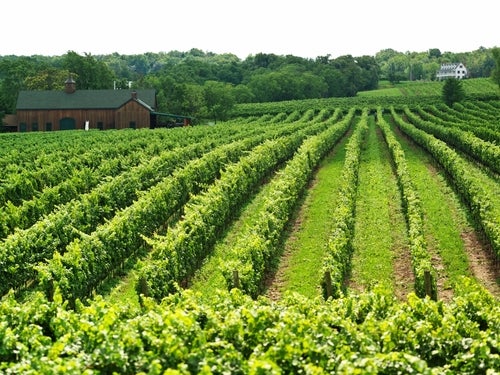The scourge of “appellationism” has already been treated in this series of columns (WFW 62, p.44; WFW 63, p.50), emphasizing the insidiousness of “typicity” and the lure of “pyramidic” hierarchies. But it can also scarcely be over-emphasized how sheer surfeit of self-begetting wine legislation threatens to hamstring growers and bewilder consumers. If there is no going back and simplifying—which, on the evidence of 75 years since the birth of French AOC, there is not—then if only it could be asked of each new proposed stipulation or category: “Is there any good reason for this?” and “Whose interest will it serve?”
Appellations: A case study in complications
France’s Languedoc and Roussillon illustrate not just how classificatory hierarchy can backfire, but also how legislative proliferation can confound both producers and consumers—and this in regions acutely deserving of greater recognition and marketability. Consider rules governing grape varieties alone. Ratios of “principal” and “accessory” cépages vary according not just to appellation but to sub-appellation, and are often ludicrously specific. That there should be half a dozen idiosyncratic sets of regulations governing Roussillon-Villages AOC and its five sub-appellations is questionable enough in a steadily shrinking region of less than 50,000 acres (20,000ha), where production of dry, unfortified wine only really turned serious three decades ago. But must the regulations be so complicated to boot? Leaving aside constraints on aesthetic liberty (including those posed by blinkered or prejudiced tasting panels) the mind-numbing effect of calculating and certifying one’s compliance is in itself a reason many growers forfeit AOC status. In regions whose regulations are especially gratuitous or inimical to quality, while the relevant IGP retains some appropriate geographical resonance, the flight from appellation can become a flood, as witness the volume of top-notch Roussillon wines marketed as “Côtes Catalanes.”
While the tyranny of typicity still threatens when panels convene to approve a wine, there seems, ironically, to be no way that Roussillon’s Villages’ convoluted regulations—or those covering much of Southern France—could result in any readily recognizable, distinctive gustatory patterns. For instance, suppose the dubious assumption were granted that local terroir or (inevitably very recent) “tradition” justify the grapes Syrah and Mourvèdre being accorded greater significance in the five villages covered by the sub-appellation Latour-de-France than they are in other sectors covered by appellation Côtes du Roussillon-Villages. The relevant regulations stipulate that those two grapes must comprise at least 30% of a Latour-de-France wine either together or separately and that either can represent 70% of volume. So, neither variety is deemed in itself appellation-relevant. A wine qualifies with 70% Syrah and 0% Mourvèdre, or vice versa.
Classificatory contrivances
Germany’s newly-promulgated Wine Law threatens enormous complications even when judged against a long record of consumer incomprehension. Because,in bringing the country’s regulations into structural conformity to those governing the entire EU—for which France’s laws provided the template—it leaves up to committees in each of Germany’s growing regions the formulation of rules governing Protected Designations of Origin. How many such appellations there might be is as yet anyone’s guess, but it’s certain they’ll differ both between regions and within. The new law purports to exchange a “Germanic” system of wine classification by must weight, for a “romance” system based on place of origin, and to reflect the “basic tenet”: “The narrower the place of origin, the higher the quality.” Yet, the must weight-based Prädikats familiar from the 1971 wine law are grafted onto the new one. And ironically, its hierarchical principle gratuitously imports must weight.
Following the lead of Germany’s elite VDP grower organization, this new law calls for regional classification of (only!) dry wines near the apex of its pyramid into Grosse- and Erste Gewächse—in effect, grands and premiers crus. That the former should be somehow geographically more restricted than the latter is implicit in the aforementioned “basic tenet,” not to mention in the shape of a pyramid. But current VDP practise doesn’t reflect that assumption: In some regions the aggregate of VDP-Grosse Lagen is significantly in excess of VDP-Erste Lagen (or the latter have not even been established). In certain instances, a VDP-Grosse Lage is located within an Erste Lage, but sometimes it’s the other way around. A more salient tension exists within the new law. Manifestly, the basis of a qualitative hierarchy based on provenance is the inherent vinous potential of a given site or sector, something the VDP makes explicit. But the new law avoids even alluding to site potential, because German agricultural holdings are already officially assessed for tax and insurance purposes on their productive potential and earning capacity.
So, how does this law distinguish criteria for a Grosses Gewächs from those for Erstes Gewächs? The former would have to come from grapes of at least 12% potential alcohol, while for the latter 11% would suffice and yields could be 10hl/ha higher. As for vineyard-designated wines not further classified as Grosse- or Erste-Gewächse, a “Kabinett minimum”—for Riesling, in effect, 9.5–11% depending on region—would suffice. As if higher must weights were qualitatively decisive—and this in the sign of global warming! Kai Schätzel’s exceptional Nierstein Grosse Gewächse would be too lightweight to meet this new standard—a reductio ad absurdum in itself. The devil may be in the details as regional committees struggle to reach consensus—but he’s also already in the compact.






